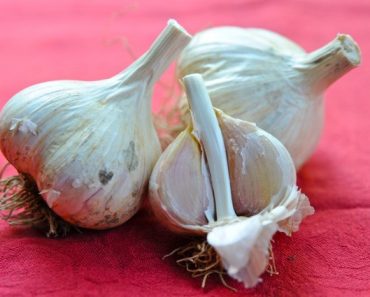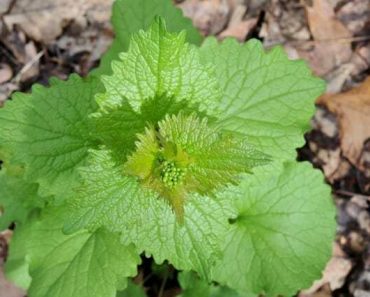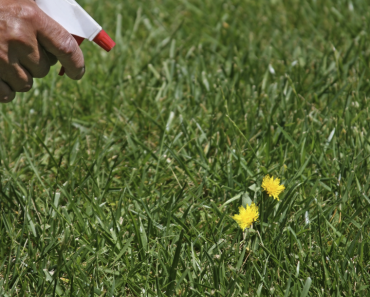
WHEW! YOU FINALLY got everything into the ground, transplanting every little seedling and sowing every seed, and it’s time to sit back and pat yourself on the shoulder. Or is it? Sorry gardeners. Especially when it comes to plants we grow as annuals, like most of our vegetables and cutting and container flowers, and even many herbs, once is not enough.
The subject is succession sowings, which to do and when and how, with help from Niki Jabbour, a resident of Halifax, Nova Scotia, and an award-winning author and popular lecturer, who also hosts “The Weekend Gardener” radio show. Her recent book, “Veggie Garden Remix,” celebrating unusual edibles we can and should grow, just won a 2019 American Horticultural Society book award. (I’ll give away a copy; enter by commenting at the very bottom of the page.)
Niki shared all her tactical advice for keeping the harvest coming.
Read along as you listen to the May 13, 2019 edition of my public-radio show and podcast using the player below. You can subscribe to all future editions on iTunes or Spotify or Stitcher (and browse my archive of podcasts here).
succession sowing for nonstop harvest, with niki jabbour
Margaret: Congratulations on the book award and welcome, Niki. How are you?
Niki: I’m great. Thank you so much and thank you so much for having me.
Margaret: Yes. That was pretty cool that you won that big, big prize in garden writing.
Niki: It was very surprising because it was completely off my radar, and I got a call from my editor and she was super-excited. I honestly, I couldn’t believe it. I was so excited, so happy. When you put all that work and love into a project, you really hope other people are going to like that too, and you don’t always know, so this was really validating for me.
Margaret: Yes. Well, I was definitely impressed and it was well-deserved because it was a different take. It wasn’t just another vegetable gardening book by any means.
Niki: Oh, thank you. That was cool. That was my whole goal just to celebrate some of these really oddball, unique, awesome vegetables we can and should grow in our gardens, but many of us just haven’t really discovered yet.
Margaret: Right.
Niki: And that was the point. Yes.
Margaret: So, succession sowing, and you know, that sense, like I said in the introduction, you know, you feel like, “Oh! I’ve done it! Everything’s full! All the spaces are taken up!”
And then it’s like, “Um … Guess what?” [Laughter.]
Niki: That’s exactly what it is. Like I mean, we all say it, “Let’s get the garden in.” And once the garden’s in, like, you wait, you harvest, you eat, and then that’s it. But it doesn’t have to be, I think, is the whole point of succession planting.
Margaret: Right. And I mean, so many things, and there are some that are just like questions, and you as a garden writer or garden communicator, are probably asked a million times. You know, there are certain things and it can be herbs as well, like cilantro, if you were like, “Well, you know, I tried cilantro, but then it was like flowering and it was all gone.”
And you know, there’s things like that that you just absolutely, positively have to re-do every 10 days or two weeks or whatever, to have a constant supply. And then there’s other things like tomatoes and eggplants and peppers that in our northern climates maybe we only do once, of course, right?
Niki: True.
Margaret: So there’s extremes … Are there extremes do you think?
Niki: Absolutely, and I think a lot of people will plant something like cilantro and it goes to flower in a couple weeks and they’re like, “Oh! I didn’t do it right.”
Margaret: Right.
Niki: “Maybe I can do that again.” Maybe they didn’t understand that it’s a cool-season crop and it likes its cool, moist soil and the cool season, and it’s not their fault. They did nothing wrong, but it is one of those vegetables, those herbs, like you say, that you have to plant often, if you want that continual supply.
Or then you have your long-season crops like, as you mentioned, tomatoes, peppers, eggplants. You plant once generally, and they stay in the garden all summer and you have a great harvest, and then maybe at the end of the summer, they can come out and you can put something else in there, a succession crop, but generally they’re in there in their spot for the whole entire season.
Margaret: Now, do you make a calendar of this or is this in your head, because you’re like a veggie garden, four-season gardener, even though you’re in Halifax, Nova Scotia, and you’re like … Don’t you even have like you have cold frames and do you have a hoop house now, too? Am I making that up or you have a ..
Niki: No, I do. I have a hoop house. It’s 14 by 24 feet. I use cold frames [above]. I use just simple mulching for harvesting all winter for a lot of root crops.
I use mini-hoop tunnels that I make sort of like little baby little hoop houses. I make those from like PVC or metal conduit, covered with plastic. I use a lot of different devices to harvest all season long, and I am in Zone 5, in Nova Scotia, which is I guess about a 12-hour drive north of New York City, so, I’m pretty northern really. [Niki’s four-season vegetable garden tactics.]
Margaret: And so you are really taking succession sowing to an extreme of extreme extremes. [Laughter.]
Niki: Well, you know, and growing up with a vegetable garden, that’s kind of what got me started when I was a kid. It really sparked that interest for me in not only eating more vegetables, but growing some. We never succession planted. So, you’d plant your bush beans and your peas and your tomatoes and your carrots, and once something was harvested, that row in the garden was left empty for the entire rest of the summer and fall, and that was it.
I had no idea I could have probably succession planted those areas.
And sometimes I have little contests with myself. I’ll have a bed in the garden, and I have 20 raised beds in my veggie garden, and I’ll be like, “I wonder how many crops I can get from this bed?”
You know, so you can start with some super-early greens, you know, follow that off with maybe some radishes or turnips, and then you go to like baby peas, some, or you know, baby carrots, and you go to some of the like bush beans, and then I’ll follow that up with broccoli for fall, and you know, greens for winter. So, I think my record is eight crops in one bed over the course of one year.
Margaret: Oh, my goodness. [Laughter.]
Niki: But that might be a little extreme.
Margaret: So, when I see farmer friends, organic farmer friends, who have their kind of bed plans on paper, you know, they’ll often have like three or four columns, say, in them. And not that every bed is used four times, but … and in one sowing maybe a cover crop for part of the year when the bed is fallow and to build the soil and stuff like that, so it’s not just constantly pumping stuff out. But frequently I’ll see several, and I think several is a realistic goal for home gardeners, do you think? Like-
Niki: Oh, yes. I would say at least two or three-
Margaret: Yes.
Niki: … over the course of the season. And I do try to put it on paper. I have excellent intentions.
Margaret: How’s that going? Pretty good? [Laughter.]
Niki: I’d like to say yes. I should say yes to you, but, you know, I get busy like everybody else. So, I’ll start off with these wonderful little charts, and then nature happens. I’ll be up in the garden, I’ll see a little space, I’m like, “Oh! I’m going to shove in a couple parsley plants here. I’m going to stick some bush bean seeds in.”
So then all my well-made plans just kind of go the window. I mean, the key for me is, keep planting and don’t let any open space remain in the garden. So, those are the two things I keep in mind. And then I just fill that space. [Above, flats of fresh seedlings ready to go in at high summer at Niki’s.]
Margaret: So, to do so, we have to have, even if we don’t make a perfect calendar, we have to have some …. our gear, kind of ready, and we have to have either a succession of seedlings coming. Hard to find at the garden center where I live—after May, or even early June, there are no more tender young seedlings of broccoli or kale or whatever to plug in, so I’ve got to plan for that myself.
So, what sort of the basics that we need to think about regardless of what crop it is, that we can have on hand?
Niki: Well, for me, that means succession planting, you know that there’s different ways to look at it, first of all. So, you can have it one plant following another. So, you’ve got something in there like, again, you’ve got spring peas, they come out, you put bush beans in for summer. You know, pull those up, put in beets for fall.
So you can succession plant that way. You can also succession plant by planting the same crop, but as you mentioned earlier on, you know, spacing it out every three or four weeks, you can put some fresh seed in. And this works great for things like the cilantro, as well as salad greens, bush beans, radishes, really fast-growing crops that you don’t want a whole lot of at one time. And then you can also plant the same vegetable at the same time, but different varieties that have different maturity dates. So, this is another easy way to succession plant.
I will plant something like maybe ‘Mokum’ carrots that are ready in 50 days, and then at the same time, I’ll plant ‘Purple Haze’ carrots that take 70, 75 days. So even though I’m planting at the same time, I’m going to be harvesting at different times. So, it kind of depends on the space you have. Like, do you have enough room to do that? Or is it easier to follow one crop with another?
So, there’s different ways to succession plant, but you’re right: When I’m thinking of summer and fall and even winter harvesting. My garden center is by early July, they don’t have any transplants left. To make sure you have that parade of plug-in plants, I like to call them, you can use your grow lights. Grow lights to me are one of the handiest tools and are pretty inexpensive. I have very cheap shop-light fixtures that cost me $20, fit it with fluorescent tubes that I change every two years and they’re hung on chains in my, you know, unfinished part of my unfinished basement. So it works great for me. You must use grow lights all the time as well?
Margaret: I do. I mean, I have maybe five, six, however many years ago, I invested in the T5 fluorescent tubes. They’re narrower and they have a higher output of light. So that’s good. I’ll confess that sometimes, you know, if I’ve put it away, or I just have like one light hood still out and not all (maybe I’ll have several out in the winter or late winter, when I’m doing stuff for spring planting)…
But I don’t have enough space, so sometimes I’ll just do them in small community pots, you know, or a flat or cellpack, and I’ll keep an eye on it; I’ll keep it near the house. I mean, I’m not going to put it out in the middle of the backyard all by itself, the poor little creature, these sown seeds, and forget to water it and so on.
But sometimes I just do it near to the house, like a little space where I might have a flat going and I might have a six-pack of this, that, and the other thing in that one flat, and so every day I’m passing it and thinking, “Oh, I’m going to water that.” So I’m using natural light outdoors is what I’m saying.
Niki: Yes.
Margaret: I also do that sometimes, but you have to remember to water it, because if seeds, when they’re germinating, dry out, they die! [Laughter.]
Niki: Yes, and doing outside, I would definitely start them in shade so they don’t dry out completely.
Margaret: Exactly.
Niki: After they germinate, move them into the light, and then that works great. I just find what I have an obsessive amount of beds, I need to produce quite a few plug-in plants, but I do use … I don’t use my whole grow lights, because I have eight grow lights in my basement on shelving, but I do end up using … I usually have two on.
Margaret: O.K.
Niki: Once that initial spring rush goes in the garden, I usually keep two turned on, and I always have three or four flats coming along underneath. And sometimes you know, I’ll find I have extra plants to share with other people as well, but generally, I’ll use up all those plants as I plug them into empty spots in the garden.
Margaret: So, you kind of alluded to some of the fast-growing vegetables that you succession plant sort of taking off on—I had mentioned the cilantro, the herb, and you mentioned like greens and stuff or so. Let’s talk about some of the ones that you would recommend that people … like in the old books, it used to say, “Plant a short row of dot, dot, dot,” you know, it would be for like lettuce or bush beans. It would be implying, don’t put 20 feet of it, if you’re a one- or two- or even four-person household.
Niki: Right.
Margaret: You know, do a little, a block. There was this sort of square-foot gardening, and you’d do a block or you could do a short row. What are the things that you do over and over and over again? Do you know what I mean? Every couple of weeks or every three weeks, what are your things like that?
Niki: I think it depends on what your family and what you like to eat, but I plant in mini-bands, I like to call them, because my beds are about 4 feet. And the poly tunnels are 3 feet across. And then there are, well, in the garden they’re either 4 by 8 or 4 by 10. So I plant in these bands that are about, well, the width of the bed, 4 feet, by about a foot to 2 feet, depending on how much of the vegetable I want at one time, and I’m constantly sowing these mini-bands.
And for me it’s like arugula. I cannot get enough of it, so I always every day of the year we have arugula in the garden to harvest. So I’m planting mini-bands of it every two or three weeks, so there’s always high-quality arugula.
I mean, if I planted a 20-foot row or even a 5- or 10-foot row, that’s going to produce maybe a little too much. And it’s not one of those crops that’s going to hold until I harvest it. It really only lasts for two or three weeks in the garden in terms of high-quality, and then it starts to bolt, starts to get more bitter, and that happens of course to lots of different greens and vegetables. So I want to maintain the high quality harvest, and that’s what succession planting lets me do.
So, planting my mini-bands every so often is the best way to do that. So, arugula, pak choi, I usually always am going different types of spinach–are big for me. I’m kind of obsessed right now with lettuce. I mean, it’s easy. There’s so many varieties, but I’ve been growing the Salanova lettuces, which are a newer cultivars. And they’re these perfect miniature rosettes of red, greens, you know, some are more perfect rounded rosettes. Some are more oakleaf types, but I love them because they’re also really cold-tolerant. So we had those all winter long in the poly tunnel, like unheated poly tunnel in the coldframe, and they were amazing.
So those are some of my go-to’s for really fast-growing things that you would only sow a little bit at a time. But even like radishes; things like kohlrabi, bush beans, baby beets, those little tiny finger carrots or the round carrots. These are all really fast-growing, so these would be the ones that I tend to rotate quite a bit.
Margaret: How many times do you, for instance, think you sow bush beans? Because I tend, I think I do like two, plus a pole bean, so and maybe three, maybe three plus a pole bean. So, I ended up like we’ll always have beans … I mean, from the first time I possibly can until the very last bit of you know, till it freezes.
Niki: Yes, I think I’m the same, actually. Probably three or four of bush beans, and then you know, I try to do two pole beans, just because they do prove for much longer period, six to eight weeks, than bush beans, which are maybe two to three.
So, I do try to stagger my pole beans about a month apart, and then bush beans every two to three weeks, but I do push it sometimes.
Margaret: Right.
Niki: Sometimes those are the few years when they … you know we had an early frost unexpectedly and it didn’t work out, but generally it does, and I’m willing to take that chance for sure.
Margaret: You know, a couple of years ago, I started growing ‘Provider’ bush beans. Have ever grown ‘Provider’?
Niki: I have, yes.
Margaret: Yes, it’s a good name because it does give you … I feel like it even gives you several pickings. Do you know what I mean? It really just keeps providing. And that brings up the subject of variety. So you alluded to this a little bit when we talked about you might sow two different carrots.
But with like lettuces and so forth, things that maybe don’t want to bump into the heat, there are some that are more or less tolerant. And when we’re a little farther into the cycle, not my first spring sowing, but farther on, I’m thinking especially the late ones, that might be bumping into either heat or then the ones that are going to be bumping into fall cold, I might be changing out the variety. So do you also when you order seeds, think about this? This succession?
Niki: I do and I mean, I order so many seeds.
Margaret: Oops! [Laughter.]
Niki: You know, spring is the time when I just order constant seeds, and I always want to try new varieties, new to me, vegetables as well as of course the varieties, so I’m always looking for that. Like this year I think I have way too many cucumbers. I just seeded them a couple days ago, and I think I had 22 varieties at this point. Which is far more cucumbers than a sane person needs. [Above, mixed cucumbers that Niki grew in a recent year, among many others.]
Margaret: Wait. Did you just say 22?
Niki: I did.
Margaret: Not 2 point 2?
Niki: No, 22 varieties.
Margaret: Uh-huh. That’s really… that’s kind of nuts. [Laughter.]
Niki: It’s excessive. I know, right? But last year I did this thing where I layered aged manure and straw at the very end of my garden. And I just tucked in a bunch of cucumber seedlings there and let them do their thing. And they went crazy. So, it’s sort of a low-maintenance spot for me, but then I’m also growing some greenhouse varieties in the poly tunnel, so I wanted to try quite a few. Like I won’t grow five or six of each type. I’ll grow one or two of each type.
But there’s a new one I’m kind of fascinated with called ‘Quirk,’ and it’s this miniature tiny little mini-cucumber that’s maybe 2 inches long, but it’s half white and half green. So, it’s like these dual colors, which is cool.
Then there’s one called ‘Itachi,’ which is this pure white Asian cucumber, so it’s really long and slender, but the skin is pure white, the inside is pure white, and it’s so interesting and unique to me that these are the things that I tend to want to try growing.
Margaret: Right.
Niki: I order way too many seeds, and I do try to think about that. I should have some heat-tolerant lettuces on hand. I should have some cold-tolerant lettuces on hand. So it is nice to make lists and stay organized, because when I place my orders in spring or early spring/late winter, I don’t want to have to do it again in summer if I realize, “Oh, no. I want a succession plant more winter lettuce. I don’t have any. I have to place an order.”
So I try to stay on top of that so I save shipping charges. Living on the East Coast of Canada, usually shipping tends to be kind of expensive for a lot of seed companies, so I try to organize myself so that I think about all that when I’m placing my main orders.
Margaret: Right. Flowers? Do you do this with flowers? I have a friend, a neighbor who’s an organic flower farmer, we were recently chatting, and she was talking about doing like four sowings of a lot of her annual flowers. Because she needs to have again, high-quality, you know, it can’t be anything but perfect. And those zinnias she sowed in May or April, are not going to be that way if they even are producing come August, September. So, she does a lot of successions of most all her annual flowers. [More on making successions of flowers.]
Niki: Yes. And I learned this from a flower farming friend, actually.
Margaret: Yes, me too.
Niki: Yes. Just because I didn’t realize you could succession plant your zinnias. Again, I’ve a short-season region and we always just plant zinnias and I have loads of flowers in my vegetable garden. Mostly to attract the beneficial insects and the pollinators, but also because I do want to cut continuously, and I also think they look fantastic, so I add lots of flowers, zinnias, sunflowers are my favorites.
As you know, like zinnias, that’s when they start blooming for three or four weeks, they produce fewer blooms and smaller blooms. So if you want those big blooms, I will tuck transplants in the garden, you know, once the frost date is passed. At the same time, I will direct-sow some seeds and so I can do it all the same time so I don’t have to repeat myself a couple weeks later.
Or I could start those seeds indoors for transplants and then plant them in the garden in a month. But you can, at that point, I usually just direct-sow and that way I have my first crop followed by the second crop. And in a home garden, I think that’s enough. If I was a serious flower farmer, I would probably do three maybe even four. [Above, ‘Jazzy Mix’ zinnia at Margaret’s neighbor Tiny Hearts Farm.]
Margaret: Yes.
Niki: And as you know, sunflowers, too: some only produce one flower per stem. So, if you plant those, and then you get your flower, it’s done. Some are multi-branching, so if you want the one flower per stem types, which tend to be the highest quality for cutting, then you’re going to want to make sure you do at least two or three successive plantings of those, probably three weeks apart, starting once that last frost has passed.
Margaret: So, if we want to get more, more, more out of our beds, you said you have how many? 20 beds? Do you have 20 beds? How many?
Niki: Twenty, plus a bunch of straw and compost beds.
Margaret: But if you want to set yourself wild goals, to get multiple turns out of each one, multiple different crops out of each one, we don’t want to exhaust our soils. So what’s the strategy there to also have one of the successions, like I mentioned with some farmer friends who will have a cover crop as one of their successions right on their charts. You know, when that bed’s going to be growing your green manure to be turned under or something. But what’s your sort of strategy to care for the soil so that it can hold up to this demand that you’re placing?
Niki: Yes. And I think that’s so important. I mean, you know, that I mean soil is key. Healthy soil makes healthy plants, and if your soil is struggling, your plants are going to struggle. Struggling plants attract insect pests. They are more susceptible to diseases, so you definitely want to start with really healthy soil.
Actually, just before I came in, I took a break from writing, and I went out and worked some aged manure into my beds right now. So, I’ve got dirty fingernails and I’m feeling the sunshine on my face and it was amazing.
So, between my successive crops, I do add some either my own homemade compost, maybe some leaf mold, or some aged manure. I don’t add as much as I would in the first crop in spring. I usually dig an inch or 2 into each bed at that point, but I will add maybe half an inch or so to each bed between successive crops, and depending on what I’m going to grow, I might even sprinkle in a slow-release organic fertilizer at planting time, too.
And I do love cover crops. As a gardener, I find it hard to give up that space for like six to eight weeks-
Margaret: I know, right?
Niki: … for a cover crop. It’s hard. But I do … If there’s a bed I have, if it’s not doing as well as I think it should or the soil’s not looking as good as I like, I will plant some buckwheat. You know, give it five or six weeks of growth, dig it under, let that decompose for a couple weeks, then I’ll replant it. And I’m always glad I did, because you really can tell the different, but it is hard to do sometimes. But that is something I do in my cold frames, especially, once all those early spring crops come out, and they’re kind of fallow for the summer until I plant winter carrots in late July. For those six or eight weeks, I will put in a cover crop just to build up the soil, too. [Above, winter rye sprouting at Margaret’s; more on cover crop choices.]
Margaret: You know it seems … One of the big epiphanies I had about succession sowing—I don’t remember how many years ago it was—was that one of the things that I felt the most excited that I finally had that “aha” and made more than one sowing of was basil. You know, because the basil would get kind of woody and shrubby, and it would all be going to flower, and I’d be pinching and pinching and pinching the flower heads from my earlier basil by the time my tomatoes were coming in. And it was like such an “aha,” and I feel like basil is something that again, that we could sow a lot more often. Do you do that?
Niki: I do at least two, and you know, I’m obsessed with basil. There’s so many incredible varieties. Especially recently, a lot of them are more resistant to downy mildew, and a lot of them really delay bolting. But I do usually two, so I’ve got some transplants now that are four inches tall under my grow lights that are ready to go in the garden shortly. I’ll probably put some in the poly tunnel too, of course, and then I’ll start some more.
So, then I’ll plant those, usually early July in the garden, and they will take me until like the frost days into late September or early October, so that we do always have high-quality basil, because when it gets woody, when it bolts, the flavor changes and it’s amazing how many gardeners I talked to who are nervous about pinching and using their homemade, homegrown herbs-
Margaret: Yes.
Niki: … because they don’t want to take them all out. You know, but I think basil is one of those herbs, the more you pinch, the more you get. So I really encourage gardeners, novice gardeners especially, to harvest their herbs often. If you end up taking too much, and the plant dies, which is something I’ve never seen happen, but if that happens, you can have another plant.
Margaret: I know.
Niki: Get another one and start again, but at least you’ve used your basil. You don’t want to wait until the end of summer when it doesn’t taste as good. So use it all summer long so you get that maximum flavor. And have you tried the new ‘Everleaf variety yet?
Margaret: No.
Niki: I’ve grown it three years in a row now. It is mildew-resistant, but for me the main thing is, it doesn’t start to flower until about seven or eight weeks later than typical ‘Genovese’ basil.
Margaret: Oh, interesting.
Niki: It’s very compact, 15 inches tall. It has really short nodes, so it’s not a great one for like a market gardener who wants big bunches of basil, because it has all these short little branches, but for a home gardener, it is really an outstanding variety.
Margaret: So, of course, we’ve almost used up our time. I just want to ask you to put in a good word for one of the other benefits of succession sowing, having to do with food waste and the reduction of that. Yes?
Niki: Absolutely. I mean, you know, if you’re planting up, as we mentioned earlier, a long row or a big bed full of one type of crop that’s all ready at the same time and you can’t eat it all at the same time, whether it’s radishes or beets or turnips or lettuce or broccoli, then you’re wasting food. And for me, that’s one of the things I try never to do, because we all know how serious a problem food waste is.
So, planting these small successive batches of vegetables one after the other, with different maturity dates, however your practice succession planting, it will reduce your food waste, which is really important. And if, you know, I can’t always plan perfectly, it doesn’t always happen like that. Sometimes it’s a bumper crop of something, and when I do have extra food, if it doesn’t get frozen, you know, or preserved some way, then it goes to our local food bank. So again, we’re not wasting food and they always are happy to get home grown herbs and vegetables of course.
Margaret: Well, Niki Jabbour, thank you so much, and again, congratulations on your recent American Horticultural Society book award for “Veggie Garden Remix,” and I hope I’ll talk to you soon.
more succession strategies and tips
more from niki jabbour
enter to win ‘veggie garden remix’
I’LL BUY a copy of “Veggie Garden Remix” by Niki Jabbour for one lucky reader. All you have to do to enter is answer this question in the comments box way down at the bottom of the page:
What do you repeat and repeat and repeat most of all–any successions of edibles or flowers going on in your garden?
No answer or feeling shy? Just say something like “Count me in,” and I will, but an answer is even better.
I’ll pick a random winner after entries close at midnight Tuesday May 21, 2019. Good luck to all. U.S. and Canada only.
get the podcast of my radio show
MY WEEKLY public-radio show, rated a “top-5 garden podcast” by “The Guardian” newspaper in the UK, began its 10th year in March 2019. The show has won three silver medals for excellence from the Garden Writers Association. It’s produced at Robin Hood Radio, the smallest NPR station in the nation. Listen locally in the Hudson Valley (NY)-Berkshires (MA)-Litchfield Hills (CT) Mondays at 8:30 AM Eastern, rerun at 8:30 Saturdays. You can subscribe to all future editions on iTunes or Stitcher (and browse my archive of podcasts here).






























